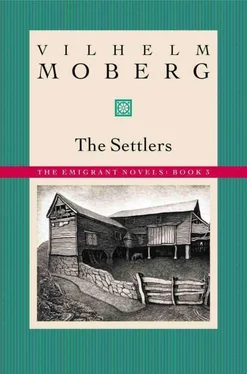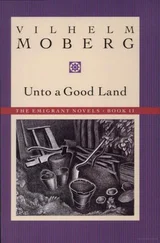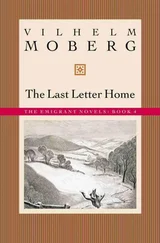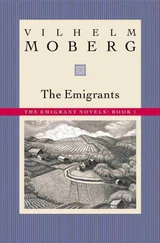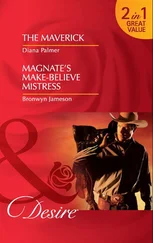Alford Roos. Diary of my father Oscar Roos. (Manuskript d: o.)
Peter J. Aronson: En svensk utvandrares minnen. (Manuskript d: o.)
Charles C. Anderson: Levernesbeskrivning. (Manuskript d: o.)
Eric A. Nelson: My Pioneer Life. (Manuskript d: o.)
V.M.
Locarno, June 1, 1959.
Suggested Readings in English
Compiled by Roger McKnight
About Vilhelm Moberg:
Holmes, Philip. Vilhelm Moberg. Boston: Twayne, 1980.
McKnight, Roger, “The New Columbus: Vilhelm Moberg Confronts American Society,” Scandinavian Studies 64 (Summer 1992):356–89.
Moberg, Vilhelm. The Unknown Swedes: A Book About Swedes and America, Past and Present. Carbondale: Southern Illinois University Press, 1988.
Thorstensson, Roland B. “Vilhelm Moberg as a Dramatist for the People.” Ph.D. diss., University of Washington, 1974.
Wright, Rochelle. “Vilhelm Moberg’s Image of America.” Ph.D. diss., University of Washington 1975.
About Swedish Immigration:
Barton, H. Arnold. A Folk Divided: Homeland Swedes and Swedish Americans, 1840–1940. Carbondale: Southern Illinois University Press, 1994.
——, ed. Letters from the Promised Land: Swedes in America, 1840–1914. Minneapolis: University of Minnesota Press for the Swedish Pioneer Historical Society, 1975.
Beijbom, Ulf, ed. Swedes in America: New Perspectives. Växjö: Swedish Emigrant Institute, 1993.
Blanck, Dag and Harald Runblom, eds. Swedish Life in American Cities. Uppsala: Centre for Multiethnic Research, 1991.
Hasselmo, Nils. Swedish America: An Introduction. New York: Swedish Information Service, 1976.
Ljungmark, Lars. Swedish Exodus. Carbondale: Southern Illinois University Press, 1979.
Nordstrom, Byron, ed. The Swedes in Minnesota. Minneapolis: Denison, 1976.
Part One. Foundation for Growth
PREFACE. THE LAND THEY CHANGED
A giant tree, uprooted by a storm, fell across a path that ran along the shore of Lake Ki-Chi-Saga in Chippewa Indian country. It remained where it had fallen, an obstacle to those who used the path. No Indian had ever thought to cut it in pieces and roll it out of the way. Instead a new path was formed which bypassed the tree; instead of removing it the Indians moved the path.
As the years passed the great tree lay there and moss covered its bole. A generation of forest life elapsed, and the fallen tree began to rot. The path round it was by now well tramped, and no one remembered any longer that once it had run straight in this place. Through the years, Indians wasted much time on the longer path, but to these people time was there to be wasted.
One day a man of another race came along the path. He carried an ax on his shoulder and walked heavily, shod in boots made on another continent. With his ax he split the rotten trunk in a few places and rolled it aside. The path was again straight and now ran its earlier, shorter course. And the man with the ax who could not waste his time on a longer road, asked himself: Why had this tree been allowed to obstruct the path for so long a time that it had begun to rot?
The tiller had come to the land of the nomad; the day the white man removed the tree from the Indian path at Lake Ki-Chi-Saga two different ways of life met head on.
The era of the nomad was coming to an end in this part of the world. The people who had time enough to wait a generation while an obstacle in their path rotted away were doomed. The hunter who moved his fire and his tent according to the season and the migration of the game could count his days. In his place came the farmer, the permanent inhabitant, who built his fireplace of stone and timbered his house: he had come to stay in this place where his hearth fire burned and his house was built.
Through a treaty which the Indians were forced to accept, the land was opened for settling and claimtaking. The hunter people were forced back before the power of the transgressors. Their hunting grounds, with the graves of their forefathers, were surrendered. Virgin soil, deep and fertile, could then be turned into fruitful fields with the tillers tools. An immense country, until now lacking any order except nature’s own, was divided, surveyed, registered, mapped, and separated into counties, townships, and sections. Millions of acres of wilderness were mapped on paper in square lots, each one intended as a homestead for a settler.
The newcomers were farmers without land who came to a country with land but no farmers. They came from the Old World where they had lived under governments they themselves had not elected and which they refused to accept. They had moved away from rulers and overlords, from poverty and suppression. They had left Germany because of revolution, Ireland because of potato blight, Sweden because of religious persecution. The immigrants were the disobedient sons and daughters of their homelands, who now settled down on a land that as yet had little or no government.
The disobedient folk of the Old World were young people: three quarters of the settlers in Minnesota Territory were under thirty. They had no useless oldsters to support. The immigrants were young people in a young country. The immigrants were not held back by the authority of an older generation. For them life began anew: they depended entirely on themselves and their own strength. They broke with many of the old customs, did their chores in their own ways, and obeyed no will except their own. Here they themselves must wield authority; in the wilderness they enjoyed in full measure the new freedom to disobey.
Here were no upper or lower classes, no one had inherited special privileges and rights, no one was by virtue of his birth superior or inferior. Each one was valued according to his ability, measured by his industry. Whether a man was better than another or inferior to him depended on what he could do. The virgin forests fostered self-assurance, developed free men.
The immigrant did not wait while an obstacle in his path rotted away; he did not have time to make a detour round a fallen tree. He had come to make a living for himself and his family, he must build a house and establish a home; he must build up a new society from its very foundation.
The first immigrants to take up claims were few and lived far apart. They could not talk to each other across their fences — their houses lay miles away from one another. But from 1850 on, the influx into the Territory increased. The settlers came in large groups, small groups, families and friends, or single individuals, and settled down along the shores of the heaven-blue waters that had given the territory its name: Minnesota.
Thus, the brown nomad gave way to the white farmer, the forest animals gave up their grazing meadows to domesticated animals, the deer pastures were turned into tended fields, the tall trees were felled and made into lumber for the settlers’ houses. High and clear shone the sky above the wilderness where the immigrants founded their new domain. The far horizons in a land without limitations stimulated their minds and desire to create; all would be new here.
Great was the land and without measure, and the land broadened their dreams.
This is a continuation of a story of a group of people who left their homes in Ljuder, Sweden, and emigrated to North America.
Sweden was the land they left behind; the American republic received them; and the fertile valley near Lake Ki-Chi-Saga — between the Mississippi and the St. Croix rivers — was the land they changed.
I. NEW AXES RINGING IN THE FOREST
— 1—
One day in May Karl Oskar Nilsson was out on his claim cutting fence posts. When the height of the sun signaled noon he stopped his work to go home for dinner.
Читать дальше
